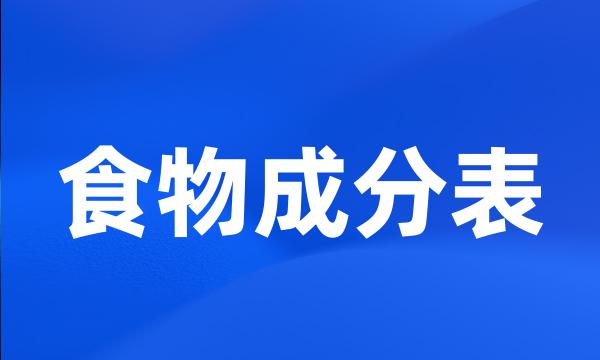食物成分表
- 网络food composition table
 食物成分表
食物成分表-
目的:了解长沙地区常用食物中锌、铜、钙的含量,以及食物成分表中全国代表值是否适用于长沙地区应用。
Objective : To assess the content of copper , zinc , and calcium among daily food in Chnagsha ; To find if the values of the National Food Composition Table are applicable in Changsha area .
-
我们用BASIC语言编写了膳食调查处理系统,以《食物成分表》中334种常见食物的十二种营养成分为基本数据,并将其分为二十类。
With the 12 nutrients of 324 popular food in ' The Food Element Table ' as basic data , and divided into 20 categories .
-
结论:食物成分表全国代表值中锌、铜、钙不宜作为长沙地区的食物成分分析依据。
Conclusions : The national representative values can not be used as criteria for Changsha area .
-
全国《食物成分表》是我国食物与营养方面的重要基础数据表。
Food Ingredients Table compiled by the State provides very important basic data of food and nutritional values .
-
营养学家和饮食学家能够通过使用食物成分表详细分析个人的饮食。
Nutritionists and dietitians can analyze a person 's diet in detail by using tables of food composition .
-
查看一些食物成分表便可知道,通常谷类的淀粉含量最高而糖含量最低。
Examination of food composition tables shows that in general , cereals are highest in starch content and lowest in sugars .
-
方法根据2002年中国食物成分表中的食物分类方法,选择不同亚类中的植物性食物,使用FossTecator膳食纤维分析仪,采用酶重量法分析其中总膳食纤维、可溶及不可溶膳食纤维含量。
Methods The contents of total , soluble and insoluble dietary fiber in 33 food samples were determined by enzymatic-gravimetric method .
-
食物成分表提供了大量关于如何测定从饮食中摄入的营养素的知识。
Tables of food composition provide much of the nutrient information needed to determine the actual nutrient intake provided by the diet .
-
要一份食物成分表(或者去之前自己在网上查询)以确保点菜时尽可能做到低盐。
Ask for a nutrition fact sheet at the restaurant ( or find it online before you go ) to help you make the best possible low-sodium choices .
-
以中国营养学会提出的营养素供给量标准为依据,结合食物成分表,对不同年级的大学生进行为期1个月的饮食状况调查与分析。
In accordance with the supply standard of nutritional elements putting forward by Chinese Nutrition Academy and according to the food ingredient table , the diet status of college students in different grades are investigated and analysed for a month .
-
采用高效液相色谱法分析了东北地区在一百四十多种食物中维生素E的容量,并对其结果进行分析、归纳和总结,从而为制定新的食物成分表提供了科学依据
This paper analyses vitamin E content in over 140 kinds of food in Northeast China with the method of high effective liquid chromatogram . The result is analysed , generalized and summarized so as to provide a scientific basis for formulating new lists of food composition
